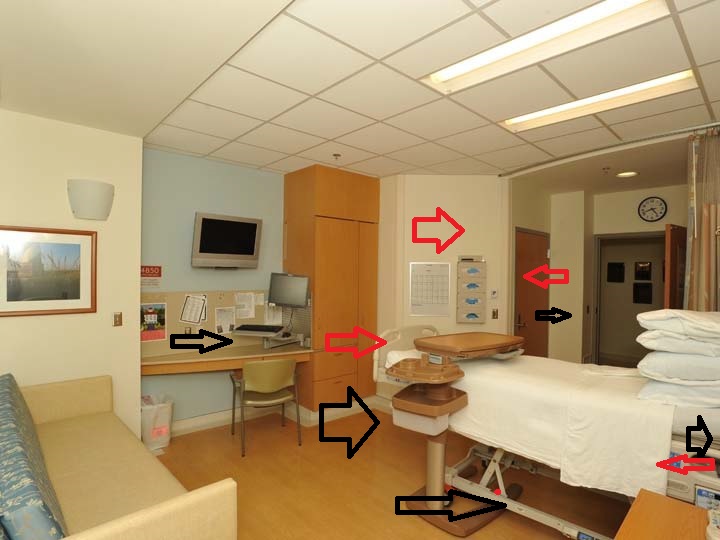
The History of Hygiene and Sanitation
- In 2017, 45% of the global population (3.4 billion people) used a safely managed sanitation service.
- 31% of the global population (2.4 billion people) used private sanitation facilities connected to sewers from which wastewater was treated.
- 14% of the global population (1.0 billion people) used toilets or latrines where excreta were disposed of in situ.
- 74% of the world’s population (5.5 billion people) use d at least a basic sanitation service.
- 2.0 billion people still do not have basic sanitation facilities such as toilets or latrines.
- Of these, 673 million still defecate in the open, for example in street gutters, behind bushes or into open bodies of water.
- At least 10% of the world’s population is thought to consume food irrigated by wastewater.
- Cropland in peri-urban areas irrigated by mostly untreated urban wastewater is estimated to be approximately 36 million hectares (equivalent to the size of Germany)
- Poor sanitation is linked to transmission of diseases such as cholera, diarrhoea, dysentery, hepatitis A, typhoid and polio and exacerbates stunting.
- Poor sanitation reduces human well-being, social and economic development due to impacts such as anxiety, risk of sexual assault, and lost educational opportunities.
- Inadequate sanitation is estimated to cause 432 000 diarrhea deaths annually and is a major factor in several neglected tropical diseases, including intestinal worms, schistosomiasis, and trachoma. Poor sanitation also contributes to malnutrition.
1750 – A letter from Lord Chesterfield to his son urges the use of a sponge and warm water to scrub the teeth each morning. The recommendation of using one’s own urine in France was widely flouted by Fouchard, the French dentist. Gunpowder and alum were also recommended.
1834 – The 1834 London Medical and Surgical Journal describes sharp stomach pains in patients with no evidence of disease. This led them to believe “painter’s colic” was a “nervous affection” of the intestines occurring when lead “is absorbed into the body”.
1847 – A physician called Ignaz Semmelwis found childbed fever occurred in women who were assisted by medical students. He found students who assisted in childbirth did so after autopsies. After instituting a strict hand washing policy, deaths dropped by 20 fold within 3 months.
1854 – In mid-18th century England, outbreaks of cholera led to an epidemic. A physician called John Snow observed that cholera seemed to spread via sewage-contaminated water. This was mostly noticed around a water pump in Broad Street, London. John removed the pump handle and the spread was instantly contained.
1858 – Hot weather struck the capital in 1858, drying up the River Thames and leaving pure sewage and other wasted piled up and exposed. This was the start of ‘The Great Stink’, forcing Parliament to close for the day and eventually initiating a reform of the sewerage systems and cesspits.
1861 – The modern flushing toilet. Thomas Crapper didn’t invent the flush toilet but is understood to have made major contributions towards its development by implanting a modern septic system that pumped soiled waters out of the city. However this particular subject is still heavily debated.
1920* – Lysol was sold as a genital disinfectant and birth control method. Lysol ads proclaimed a host of benefits for every gynecological need, and was the leading form of birth control from 1930 to 1960. Lysol is a poison that can cause burns and itches after the first drop.
*Source https://en.wikipedia.org/wiki/Lysol. “The first Lysol Brand Antiseptic Disinfectant was introduced in 1889 by Gustav Raupenstrauch to help end a cholera epidemic in Germany. The original formulation of Lysol contained cresols. This formulation may still be available commercially in some parts of the world. Formulations containing chlorophenol are still available in the United Kingdom.In 1911, poisoning by drinking Lysol was the most common means of suicide in Australia and New York. One of the active ingredients, benzalkonium chloride, is highly toxic to fish (LC50 = 280 μg ai/L), very highly toxic to aquatic invertebrates (LC50 = 5.9 μg ai/L), moderately toxic to birds (LD50 = 136 mg/kg-bw), and slightly toxic (“safe”) to mammals (LD50 = 430 mg/kg-bw)”.
1900’s – Autoclaves


